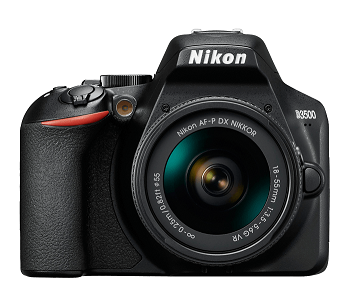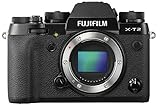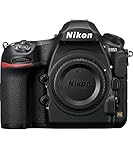Best Cameras of 2024

Last Updated on March 24, 2024 by Darron Dennis
If you are in search of the top 10 best cameras for professional use, you are in the right place.
The camera has become an essential tool in people’s day-to-day life, as it can be used to take pictures, and most people cherish a well-taken picture, that can be achieved with a good camera in hand. The best camera in hand can produce long-lasting images,
Cameras can be used for several things, like taking photos and making video shoots for clients.
Knowing this, we compiled a list of the best cameras for professionals in June 2021 for you, so you have ample choices to make.
Before we go to the point, we’d love to show you points to consider before delving into getting the best camera for professionals. To aid you in making this choice we made a list of things to consider while deciding to go for your best camera., these things are;
- What is your budget like?
- The quality and features that best suits you, and
- The different brands of cameras available
What is your budget like?
What your budget is, is one of the easiest ways to stream down your needs. Below are ranges of prices to look out for.
- Low budget: $400-$600
- Mid-Range: $1000-$2500
- High-End: $2500-$5500 plus
Table of Contents
BUYER’S GUIDE
Features to look for in cameras
Once you know what type of camera you’re looking for, you want to make sure that the camera you’re buying has the features and specifications you’re looking for. But what should you look for? There are a lot of options out there. Let’s take a closer look at what you should look for in a camera.
- Interchangeable or fixed lens
- Mirrorless or DSLR
- Photo quality
- Video quality/control
- Low-light quality
- Zoom
- Viewfinder
- Wireless
- Interchangeable or fixed lens
Depending on the type of photography you may be doing, choosing between an interchangeable and fixed lens camera can come down to the advantages that both have to offer. With interchangeable lenses, you always have the option to buy another lens to suit your needs. However, this can add to the size of the camera while a fixed lens camera can be much smaller.
- Mirrorless or DSLR
If you decide to go with an interchangeable lens, you’re next decision to make is whether you want a DSLR or mirrorless. Many people believe that DSLR cameras are the best option for high-quality, high-speed photos. This isn’t necessarily true because a mirrorless camera can be very similar to a DSLR. Some of the biggest differences lie in the better battery life of a DSLR camera and the cost of a DSLR is much cheaper than a mirrorless camera. A mirrorless camera can be a good choice if you’re shooting video because the autofocus performance and LCD view screen make it much easier to operate.
- Photo quality
Ideally, this should truly be the first thing you consider when you choose a camera and if it is, you will want to consider the size of the sensor in the camera. As a general rule of thumb, bigger is better, but bigger also comes with a higher price.
- Video quality/control
If you’re shooting causal video, a camera with good autofocus may work best. If your needs are a little more advanced, a camera with 4k support, customizable tone curves, plus lots of touchscreen controls plus frame rate options may be a better option for your needs.
- Low-light quality
If you can see yourself taking a decent number of pictures in low-light situations, you’ll want to compare the maximum native ISO sensitivity capability. Choosing a camera with a large size sensor along with good image stabilization will allow you to use slower shutter speeds and take better pictures in low-light situations.
- Zoom
For professionals, the level of zoom that can be achieved with their camera can make or break their career with the use of telephoto or super-telephoto lenses. For amateur photographers, a camera with a normal level of zoom can help you achieve some stunning photos. Deciding what types of photos you intend on taking will help determine the level of zoom that’s best for you.
- Viewfinder
The days of holding a camera up to your face and squinting through the viewfinder is a thing of the past these days with the inclusion of an LCD screen on the back of many cameras, making it easier to shoot pictures in direct sunlight. Using a viewfinder to take pictures is also makes it easier to hold the camera steady.
- Wireless
Most cameras on the market today will have some integration options where you can use either Wifi or Bluetooth to upload your photos to your computer right after you take them. Many times, this process will be done through a native app found on the camera itself. It is always a good idea to read reviews of the app before buying the camera.
Different brands of cameras
There are various brands of cameras to choose from
- canon
- Nikon
- sony
- Olympus
- Leica
- Fujifilm
- Pentax
The Best Cameras for Designers/Creatives in June 2021
The best cameras in your arm are like an armory in your arsenal, it will come in handy when needed. The best camera is like an extension of your arm. When you have one that fits comfortably and can provide you with all the options you need, it feels “meant to be”. So far, we’ve given you a ton of information about the different types of cameras and what you should look for when you go shopping and that can be really overwhelming.
To make things a bit easier, we’re going to break down our list of The Best Cameras for Designers & Creatives in June 2021 into different budget tiers. While not all of us can afford top-of-the-line cameras, that doesn’t mean we can’t have high-quality cameras that suit our needs.
Below are the top cameras for designers:
| NAME |
FEATURES |
WHERE TO BUY |
| NIKON D850 |
|
GET IT NOW |
| Canon EOS 5D Mark IV |
|
GET IT NOW |
| Sony A6500 |
|
GET IT NOW |
| Fujifilm X-T2 |
|
GET IT NOW |
| Panasonic Lumix GH5 |
|
GET IT NOW |
| Sony Alpha A7 III |
|
GET IT NOW |
| Panasonic G7 |
|
GET IT NOW |
| Nikon D3500 |
|
GET IT NOW |
| Canon SL2 |
|
GET IT NOW |
| Panasonic Lumix ZS100 |
|
GET IT NOW |
Nikon D850
The Nikon D850 is Nikon’s latest high resolution full-frame DSLR, boasting a 46MP backside-illuminated CMOS sensor. But, in a fairly radical departure for the series, it is also one of the company’s fastest-shooting DSLRs. This combination of properties should significantly widen the camera’s appeal to high-end enthusiasts as well as a broad range of professional photographers.
| PROS | CONS |
| New full-frame backside illuminated 45.7-megapixel CMOS sensor | Optical viewfinder tested at only about 98% coverage, Limited AF point coverage when using optical viewfinder |
| Class-leading resolution | Live view/movie mode still uses slow and clumsy contrast-detect AF |
| Excellent dynamic range | 30 minute video clip limit |
| Very good high ISO performance, Improved JPEG image quality compared to the predecessor | Focus peaking & electronic VR not supported for 4K video |
| Very quick startup, Very fast AF speed | No 4K @ 60fps |
| Low shutter lag and cycle times | No AF illuminator |
| Fast 7 fps burst mode | No built-in flash |
Canon EOS 5D Mark IV
The Canon EOS 5D series is arguably one of the most recognizable camera lines of the digital age and the Mark IV is designed to appeal to the same wide range of enthusiasts and professionals. Nearly identical-looking to its predecessor, it receives substantial upgrades under the hood, including: a higher-resolution sensor with Dual Pixel autofocus, 4K video capture, an upgraded AF system, a touchscreen, improved weather-sealing, built-in Wi-Fi/NFC, an interval timer and GPS. All this adds up to a camera that fits into Canon’s product line nicely as the all-around full-frame option.
| PROS | CONS |
|
|
|
|
|
|
|
|
|
|
|
|
|
|
|
Sony A6500
 The Sony a6500 is the company’s top-tier APS-C mirrorless model, a 24MP stills and video camera with image stabilization. It sits above the similar-looking a6300 in Sony’s lineup, adding touchscreen capability and stabilization for enthusiasts willing to dig a little deeper into their pockets.
The Sony a6500 is the company’s top-tier APS-C mirrorless model, a 24MP stills and video camera with image stabilization. It sits above the similar-looking a6300 in Sony’s lineup, adding touchscreen capability and stabilization for enthusiasts willing to dig a little deeper into their pockets.
| PROS | CONS |
|
|
|
|
|
|
|
|
|
|
|
|
|
Fujifilm X-T2
 In its compact, lightweight and robust body, the FUJIFILM X-T2 delivers everything you need. A large, high definition EVF, easy to use dials, high-speed AF, compatibility with an extensive range of high-performance interchangeable lenses, Film Simulation modes that inherit the legacy of Fujifilm colors, unparalleled image quality and outstanding 4K movie recording, made possible by the latest sensor and processing engine, It is the X series perfected.
In its compact, lightweight and robust body, the FUJIFILM X-T2 delivers everything you need. A large, high definition EVF, easy to use dials, high-speed AF, compatibility with an extensive range of high-performance interchangeable lenses, Film Simulation modes that inherit the legacy of Fujifilm colors, unparalleled image quality and outstanding 4K movie recording, made possible by the latest sensor and processing engine, It is the X series perfected.
| PROS | CONS |
|
|
|
|
|
Panasonic Lumix GH5
 The GH5 packs fully-fledged video features inside a compact mirrorless (Micro Four Thirds, or MFT) body. It can shoot 4K video until the battery is dead or the memory is full, and it’s recording at twice the frame rate of any other 4K mirrorless camera. In many ways, the GH5 seems to built for videographers first, and still photographers second.
The GH5 packs fully-fledged video features inside a compact mirrorless (Micro Four Thirds, or MFT) body. It can shoot 4K video until the battery is dead or the memory is full, and it’s recording at twice the frame rate of any other 4K mirrorless camera. In many ways, the GH5 seems to built for videographers first, and still photographers second.
| PROS | CONS |
|
|
|
|
|
Sony Alpha A7 III
 With its latest model, the 24.2-megapixel A7 III, Sony has created a near-perfect all-around camera. It has the best mirrorless autofocus system on the market, sharp, full-frame 4K video, high shooting speeds worthy of a sports camera, and excellent image quality. It’s not perfect, but after trying it for a week, I can say it’s easily the best camera you can buy, and it even tops a few more expensive cameras.
With its latest model, the 24.2-megapixel A7 III, Sony has created a near-perfect all-around camera. It has the best mirrorless autofocus system on the market, sharp, full-frame 4K video, high shooting speeds worthy of a sports camera, and excellent image quality. It’s not perfect, but after trying it for a week, I can say it’s easily the best camera you can buy, and it even tops a few more expensive cameras.
| [PROS | CONS |
|
|
|
|
|
|
|
|
|
|
|
Panasonic G7
 The Panasonic Lumix DMC-G7 is the latest in the company’s line of DSLR-styled mirrorless cameras. It offers a 16MP Four Thirds sensor and a Micro Four Thirds lens mount, and gains 4K video recording. A revamped 4K Photo Mode makes it easier to utilize high resolution video recording for stills shooting. It provides a built-in 2,360k-dot OLED electronic viewfinder alongside a fully articulated 3″ 1040k-dot LCD. Wi-Fi is built in, though there’s no NFC as provided on the Lumix DMC-G6.
The Panasonic Lumix DMC-G7 is the latest in the company’s line of DSLR-styled mirrorless cameras. It offers a 16MP Four Thirds sensor and a Micro Four Thirds lens mount, and gains 4K video recording. A revamped 4K Photo Mode makes it easier to utilize high resolution video recording for stills shooting. It provides a built-in 2,360k-dot OLED electronic viewfinder alongside a fully articulated 3″ 1040k-dot LCD. Wi-Fi is built in, though there’s no NFC as provided on the Lumix DMC-G6.
| PROS | CONS |
| Beginners looking for a camera to grow in to or DSLR owners looking for a smaller | Users wanting simplicity from their shooting experience |
| lighter second camera: especially those interesting in shooting video. | Photographers obsessed with absolute image quality |
Nikon D3500
The Nikon D3500 isn’t just one of the best entry-level DSLRs you can buy – it’s also one of the cheapest. You don’t need to be a photographer to know a great photo when you see one. And you don’t need to be a photographer to take a great photo—you just need the D3500. It’s as easy to use as a point-and-shoot, but it takes beautiful DSLR photos and videos that get noticed. It feels outstanding in your hands, sturdy, and balanced with controls where you want them. It’s compact, durable, and versatile, ideal for travel. And it works seamlessly with compatible smartphones, making it easier than ever to share your great photos. Even if you’ve never picked up a DSLR camera, you can take beautiful pictures with D3500
| PROS | CONS |
|
|
|
|
|
|
|
Canon SL2
One of the smallest and lightest Canon DSLRs is the Rebel SL2, announced in June of 2017 and retailing for $549, body only. The SL2 also goes by the names “EOS 200D” and “Kiss X9” outside the US market. Despite the camera’s small size, Canon packed a lot into the SL2, including a tilt-flip touchscreen, dual pixel autofocus, and the company’s newest 24 MP sensor. This detailed review covers everything you need to know about the SL2. The specifications of the Canon SL2 are on the higher end of what you would expect from an entry-level DSLR, in part because the SL2 is more about being as small and lightweight as possible rather than as cheap as possible. So, you will find features like a tilt-flip LCD and dual pixel autofocus that outmatch other entry-level cameras.
| PROS | CONS |
|
|
|
|
|
|
PANASONIC Z100
The Panasonic’s ZS100’s 10x zoom lens is thus far the longest we’ve seen in a compact camera with a 1-inch sensor, and it offers a broad set of features including 4K video.
Occupying an interesting middle ground between the company’s LX100 enthusiast compact and FZ1000 mega zoom, the Panasonic Lumix ZS100 offers a general-purpose compromise among image quality, zoom and size that adds up to a highly recommendable camera for families, travelers and even hobbyists who get frustrated with the short lenses in most enthusiast compacts.
Part of Panasonic’s “travel zoom” series of compacts — hence its alternate names TZ100 in the UK and TZ110 in Australia — the ZS100 goes head-to-head with the Sony Cyber-shot RX100 IV. That’s a pretty good deal for its price,
Though it’s not quite up to the standard of the best cameras with 1-inch sensors, I think most people will be perfectly happy with the photo and video of the ZS100, which ranges from very good to excellent. In auto mode the photos tend to come out darker than in manual or priority modes which results in very dense shadows, but for the most part it delivers.
| PROS | CONS |
|
|
|
|
|
|
|
|
|
Conclusion
From all the cameras listed above, they all have their great sides, while you are choosing the camera that best suits your needs, you have an ample of options to choose from. however, we have picked the best, that can serve almost virtually all your needs, and that is the NIKON D850.





